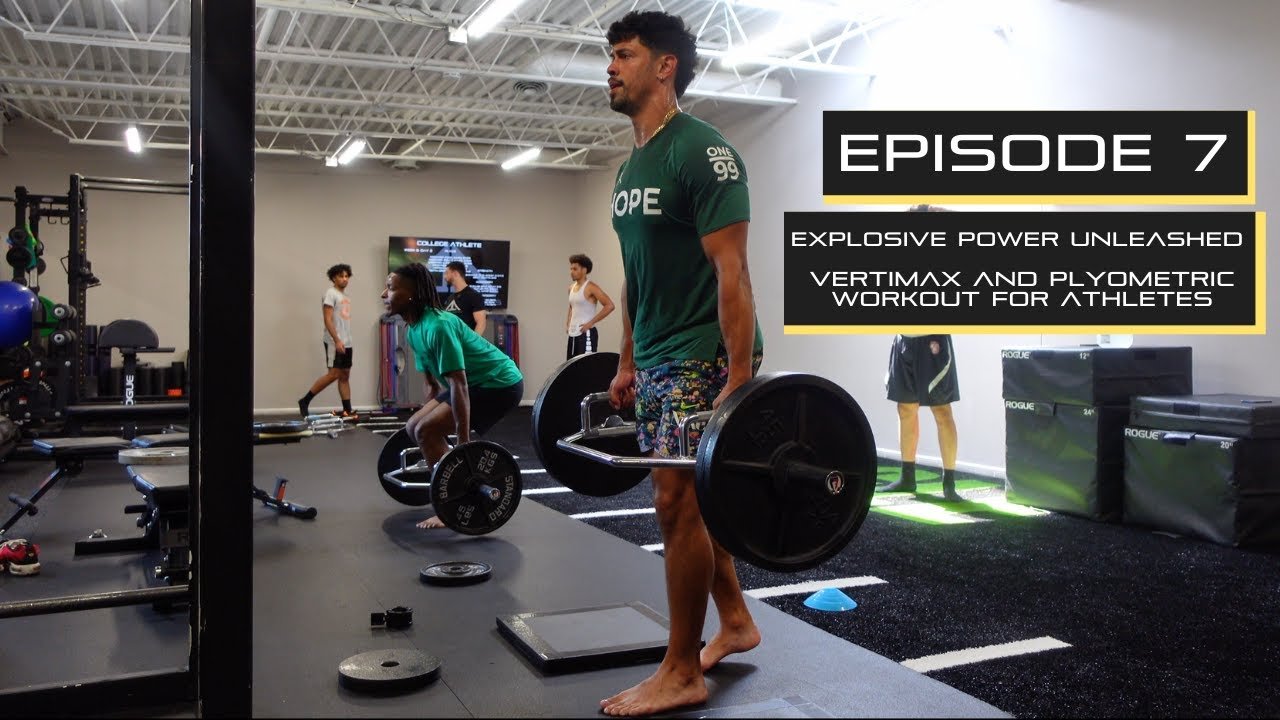Plyometric training is a form of exercise that involves explosive movements to improve muscular power. It often includes jumping and bounding activities.
Plyometric training, recognized for enhancing speed and strength, forms an essential component of athletic conditioning. This dynamic method leverages the stretch-shortening cycle of muscles, maximizing their output without necessarily increasing muscle mass. Its effectiveness lies in the rapid transition from muscle elongation to muscle contraction, which boosts the efficiency of the neuromuscular system.
Ideal for sports requiring power and speed, plyometrics can be integrated into various fitness routines to boost overall functional performance. Accessible to a wide range of fitness levels, these exercises typically focus on lower body movements like squat jumps, box jumps, and lunge hops, though upper body variations exist as well. Users are cautioned to approach plyometric training with a base level of fitness due to its high-impact nature, ensuring safety and injury prevention.
Introduction To Plyometric Training
Plyometric training, often called “plyos,” is a type of exercise that enhances explosiveness. It involves high-intensity movements such as jumping and sprinting. These exercises help athletes to improve power, speed, and agility. People from all athletic backgrounds use plyometrics to reach their peak performance.
Brief History
Originating in the 1960s, plyometric training became popular through the work of Soviet scientist Yuri Verkhoshansky. He coined it “the shock method” because it focuses on quick and powerful muscle contractions. His techniques shaped modern sports training.
Key Principles
- Quick Muscle Contraction: Plyometric exercises involve rapid tension in the muscles to increase power.
- Stretch-Shortening Cycle (SSC): This cycle is a natural muscle response. It allows muscles to contract more forcefully after quickly stretching.
- Controlled Impact: Proper technique is crucial to minimize risk and maximize gains.
- Progressive Overload: Gradually increasing intensity ensures safe improvement in performance.

Credit: m.youtube.com
The Science Behind Plyometrics
Plyometric training is a dynamic form of exercise that can revolutionize your fitness routine. It’s based on the principle of using quick, powerful movements. These movements aim to improve the functioning of your nervous system and increase your muscle power. Understanding the science behind plyometrics explains why athletes and fitness enthusiasts include these exercises in their training regimens.
Mechanics Of Muscle Contractions
The mechanics of muscle contractions in plyometric exercises are unique. They involve the stretch-shortening cycle (SSC). Muscles stretch before they contract. This action is like a rubber band being pulled and released, causing a powerful snap. In plyometrics, this snap translates into explosive movement.
Two key phases make up the SSC:
- Eccentric Phase: Muscle lengthens under tension.
- Concentric Phase: Muscle aggressively shortens after the stretch.
Benefits For Athletic Performance
Plyometrics can take your athletic performance to another level. This training style offers various benefits:
- Increased Power: Plyometrics boosts explosive power in your legs and arms.
- Speed: Athletes gain faster acceleration and sprinting ability.
- Agility: Quick direction changes become smoother and more efficient.
- Endurance: Muscle stamina and fatigue resistance improve.
Core Exercises In Plyometric Training
Plyometric training boosts your strength and speed. By using explosive movements, it targets your muscles. This helps you jump higher and run faster. Plyometric exercises are fun and effective. Enhance your workout routine with these core plyometric exercises.
Lower Body Workouts
Focus on your legs with these lower body plyometrics. They build power in your thighs, glutes, and calves.
- Squat Jumps: Bend low, then leap high.
- Box Jumps: Jump onto and off a box.
- Lateral Hops: Hop side to side, fast.
Upper Body Workouts
Develop your upper body strength with these exercises. They target your arms, shoulders, and chest.
- Plyo Push-ups: Push up and lift off.
- Medicine Ball Slams: Lift and throw a ball down.
- Overhead Throws: Throw a ball high, using your whole body.
Full-body Workouts
Engage your whole body with these dynamic movements. They work your lower and upper body together.
- Burpees: Squat, kick back, jump, and stand.
- Jump Lunges: Lunge and switch in midair.
- Tuck Jumps: Jump up, knees to chest.
Designing A Plyometric Workout Routine
Embarking on plyometric training can take your fitness to new heights. Designing an effective plyometric workout routine is crucial to harness the explosive power and reap the benefits these exercises offer. Plyometric training enhances speed, power, and agility. A well-structured plan ensures safety and maximizes results.
Assessing Fitness Levels
Before jumping into plyometric exercises, assessing your current fitness level is essential. Plyometric training is demanding. It requires a foundation of strength and good physical condition. Perform a fitness assessment with a focus on lower body strength. Ensure you can perform basic movements like squats and lunges with ease. These prerequisites set the stage for a safe, effective workout.
Bold steps for assessing fitness:- Consult with a professional – to evaluate your readiness.
- Check your base strength – can you do basic leg exercises?
- Look at your past injuries – address these before starting.
Progression And Intensity
Start with basic exercises. Gradually increase complexity. This approach helps avoid injury. Plyometric exercises come in various intensities. Beginners should start low and go slow. Your body needs time to adapt. Pay attention to the quality of each jump or move. Gradually increase the intensity as your strength and skill improve.
Key points include:| Week | Exercise Difficulty | Repetitions |
|---|---|---|
| 1-2 | Basic | Low |
| 3-4 | Moderate | Moderate |
| 5+ | Advanced | High |
Recovery And Frequency
Rest is as vital as the workouts. Plyometrics are high-impact. They require recovery time. Allow 48-72 hours between sessions. This gives muscles time to repair. For beginners, one to two sessions per week is ample. As fitness improves, you may increase frequency. Always listen to your body. If you feel fatigued, allow more recovery time.
Essentials for recovery:- Adequate rest – 48 to 72 hours between sessions.
- Proper nutrition – fuel muscle repair and growth.
- Hydration – essential for recovery.
A plyometric workout routine tailored to your own fitness level elevates your physical capabilities without risking harm. Remember to assess, progress wisely, and prioritize recovery.
Safety Measures And Precautions
Plyometric training is known for its high-intensity nature. It can significantly boost strength and endurance. But it’s vital to follow safety measures to prevent injuries. Understanding these measures ensures a safe and effective workout session.
Injury PreventionInjury Prevention
Injury prevention is critical during plyometric training. The intense jumps and moves can strain muscles and joints. Here are key tips:
- Use proper footwear to cushion landings.
- Gradually increase intensity; don’t jump into complex routines too quickly.
- Focus on technique as much as on the height or speed of jumps.
- Rest adequately to allow muscles to recover.
Proper Warm-ups
Warming up primes your body for the strenuous activities ahead. It’s a must before any plyometric session. Here’s a brief warm-up guide:
- Begin with 5-10 minutes of light cardio to increase your heart rate.
- Move on to dynamic stretches that mimic plyometric movements.
- Include low-intensity plyometric exercises to prepare your body.
- Finish with specific drills related to your upcoming routine.
When To Avoid Plyometrics
There are times when avoiding plyometrics is the best decision. Pay attention to your body’s signals:
- Avoid training if you feel any pain or discomfort before starting.
- Skip plyometrics if you have existing injuries, particularly joint or muscle issues.
- If you’re feeling fatigued or had intense training the day before, hold off.

Credit: fastercapital.com
Case Studies: Success Stories With Plyometrics
Discover how plyometric training has revolutionized the fitness journeys of countless individuals in our ‘Case Studies: Success Stories with Plyometrics’ section. Plyometrics, also known as jump training, consists of explosive exercises that increase power, speed, and endurance. Through real-life success stories, gain insight into how plyometrics can be a game-changer for athletic performance and fitness levels.
Athletes And Amateurs
World-class athletes and gym enthusiasts alike have embraced plyometrics for its remarkable benefits. Here are some inspirational cases:
- Professional Basketball Player: A star player improved his vertical leap by 4 inches after a rigorous 6-week plyometric routine.
- Olympic Sprinter: Crediting plyometric drills for enhanced sprint starts, an Olympic medalist shaved valuable seconds off her 100m dash time.
- Weekend Warrior: A recreational runner achieved a half marathon personal best after integrating plyometrics into training.
Integrating With Other Training
Introducing plyometrics to an existing workout regimen can yield impressive results. See how various athletes have succeeded:
| Individual | Training Mix | Outcome |
|---|---|---|
| Marathon Runner | Long Runs + Plyometrics | Reduced marathon time by 15 minutes. |
| High School Swimmer | Swim Practice + Dry-Land Plyometrics | Improved overall swim times and power off the blocks. |
| Amateur Boxer | Traditional Boxing Drills + Plyometric Circuits | Noticed significant increase in punch speed and agility in the ring. |

Credit: www.getphysical.com
Frequently Asked Questions For What Is Plyometric Training
What Is The Plyometric Training?
Plyometric training involves explosive movements to improve muscular power. It includes jumps and skips, enhancing strength and speed. Designed for athletic performance, it boosts coordination and agility.
What Is Plyometric Training Advantages And Disadvantages?
Plyometric training boosts power, speed, and agility with dynamic movements. It enhances athletic performance and burns calories efficiently. However, it may lead to injury without proper technique and can be strenuous for beginners or those with joint issues.
Is Plyometric Training Hard?
Plyometric training can be challenging due to its high-intensity exercises that focus on speed and power. It requires a solid fitness foundation and proper technique to avoid injury.
Is Plyometrics Like Cardio?
Yes, plyometrics incorporates cardiovascular elements by combining fast-paced, explosive exercises that raise your heart rate, similar to traditional cardio workouts.
Conclusion
Plyometric training is a dynamic cornerstone of athletic development. It boosts power, speed, and agility. Whether you’re a seasoned athlete or a fitness enthusiast, integrating plyometrics can elevate your performance. Embrace these explosive exercises, and you’ll soon see significant improvements in your physical prowess.
Jump-start your routine; the benefits await.


